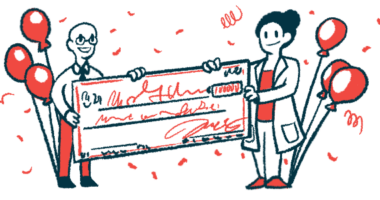A friend’s visit reminds me of what now seems a lifetime ago
My husband was once able to come with me to McLain State Park. Not now.

A friend from a lifetime ago rolled down an accessible path leading to Lake Superior in my husband’s backup power wheelchair, and I experienced a sense of déjà vu after we turned down a boardwalk trail through the woods. My husband, Todd, was able to traverse this trail in McLain State Park, here in Michigan, just two years ago — although not without difficulty, because his neck was weak from ALS. Below the neck, he’s completely paralyzed.
As I walked with my friend, along with her husband and my mother, I found myself watching to make sure her head wasn’t bouncing around too much. I had to remind myself that her upper body was still strong. Her disability is an amputated foot, and while she’s getting accustomed to walking on a prosthetic, she often uses a rollator walker and a portable electric scooter. But the distances and inclines at the park required something more powerful.

Kristin Neva, right, with friends at McLain State Park in Michigan. (Courtesy of Kristin Neva)
Fortunately, we’d held on to Todd’s first power wheelchair, which somebody gave us when he started to have trouble walking. We’d learned that Medicare will only cover one wheelchair every five years, and so we wanted to wait to order his Medicare chair when he could qualify for one with all of the features he’d need long-term. We use the old wheelchair whenever his fancy one is being serviced.
My friend and I came to a sandy glade with grills, picnic tables, and a view of Lake Superior.
“This is where we had family pictures taken two years ago,” I said. “And I’m wearing the same T-shirt.”

The Neva family at McLain State Park in 2022. (Courtesy of Kristin Neva)
A wave of nostalgia washed over me as I looked down at my shirt. Todd had designed matching shirts for us that featured an outline of the Upper Peninsula of Michigan. Had that really only been two years ago?
It feels like a different lifetime ago when we could still get out.
And now, I was with my old friend from our days in Milwaukee. Todd and I knew and mentored her when she was a teenager, and we attended her wedding 13 years ago, a year after Todd was diagnosed. At that time, it seemed like Todd’s life was coming to an end and hers was just beginning. My dad was one of the groomsmen, and he passed away five years later.
The changes with time
Since then, Todd’s ALS has progressed slowly but steadily, and he’s been gradually getting out less and less. Two years ago he made it to McLain State Park a couple times, but since then he’s only been out of the house a few times for medical appointments. Todd is so weak now that it’s an accomplishment just getting him out onto the patio to get some sun.
Sitting at a picnic table with my friend in the woods, we chatted about some of her challenges, such as a fire drill in which able-bodied people crowded onto an elevator, rather than taking the stairs, and left her stranded on an upper floor in her scooter.
I shared a story of a similar frustration that Todd and I experienced when we went to one of our daughter’s band and choir concerts. Todd parked his power wheelchair in the only accessible opening, and an able-bodied person in the companion seat next to it refused to move, even though plenty of other seats were still available.
“Well, he’s paralyzed,” I told the guy. “So if he needs an itch scratched, that’s on you.” I sat in a different section of the auditorium. He eventually moved from Todd.
Timelines blur as I think back over the course of the disease. I know we got Todd’s good power wheelchair in 2014, but when did he first have trouble sleeping through the night?
Recently, on an ALS Facebook group, I shared our edema video with someone who was experiencing that problem. YouTube showed that the video was made six years ago. Has it really been six years?
That same afternoon that I went to the park, I drove Todd using the attendant control in his wheelchair out onto the back patio. His neck gets jostled too much going over the low threshold for him to drive himself. Todd said the sun felt good on his skin, and we talked with our old friend and her husband while our dog, Comet, played with their miniature poodle.
A lifetime ago we mentored a teenager as she navigated school and friendships, and now we’re having conversations with her about disabilities and dogs. Life is hard, but we get through it with love.
Note: ALS News Today is strictly a news and information website about the disease. It does not provide medical advice, diagnosis, or treatment. This content is not intended to be a substitute for professional medical advice, diagnosis, or treatment. Always seek the advice of your physician or other qualified health provider with any questions you may have regarding a medical condition. Never disregard professional medical advice or delay in seeking it because of something you have read on this website. The opinions expressed in this column are not those of ALS News Today or its parent company, Bionews, and are intended to spark discussion about issues pertaining to ALS.








Leave a comment
Fill in the required fields to post. Your email address will not be published.